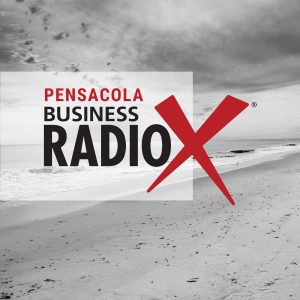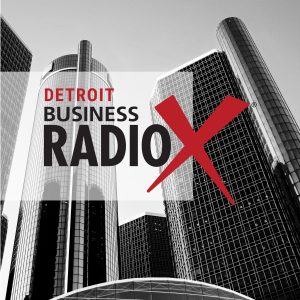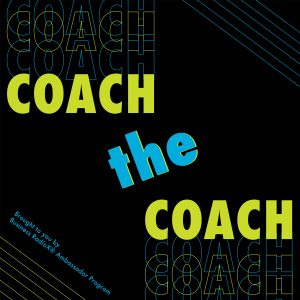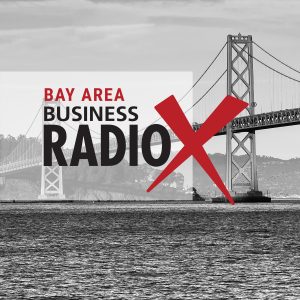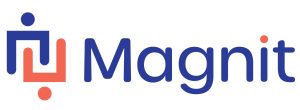
Magnit™ is a global leader and pioneer in contingent workforce management. Their industry-leading Integrated Workforce Management (IWM) Platform is supported by 30+ years of innovation, modern software, proven expertise, and world-class data and intelligence.
It enables companies to optimize talent and diversity goals while achieving operational and financial success. With Magnit, companies can adapt quickly to the evolution of work to grow their extended workforce with greater agility, transparency, and speed.
 Rob Lucido is proud to serve as Senior Director of Strategic Advisory at Magnit. He has dedicated his career to helping organizations optimize their workforce and achieve their strategic goals.
Rob Lucido is proud to serve as Senior Director of Strategic Advisory at Magnit. He has dedicated his career to helping organizations optimize their workforce and achieve their strategic goals.
With extensive experience in providing actionable insights and advice on talent management, recruitment, retention, and organizational design, he’s adept at delivering solutions that drive business results.
His expertise in market intelligence, data analysis, and workforce planning enables him to create customized strategies tailored to each client’s unique needs. As a thought leader in the industry, he has a proven track record of developing innovative solutions that help organizations stay ahead of the curve in a rapidly changing business landscape.
Professionally, he has over a decade of experience within the investment management industry, workforce analytics consulting with a particular focus on leadership, performance reporting, accounting and operations. He’s held senior management positions in financial operations, business operations and technology with a proven track record in Contingent Workforce Management and Financial Services, improving business processes and building high performing teams to deliver results.
Connect with Rob on LinkedIn.
What You’ll Learn In This Episode
- Introduction to his role and Magnit
- Where Magnit gathers their data fro
- What workers fall under the category of workforce extended
- Big population of contingent workers and new hires in Atlanta
- Trends in Atlanta’s labor market
![]() This transcript is machine transcribed by Sonix
This transcript is machine transcribed by Sonix
TRANSCRIPT
Intro: [00:00:04] Broadcasting live from the Business RadioX studios in Atlanta, Georgia. It’s time for Atlanta Business Radio. Brought to you by On pay. Atlanta’s new standard in payroll. Now, here’s your host.
Lee Kantor: [00:00:25] Lee Kantor here, another episode of Atlanta Business Radio, and this is going to be a good one. But before we get started, it’s important to recognize our sponsor, Onpay. Without them, we couldn’t be sharing these important stories. Today on Atlanta Business Radio, we have Rob Lucido with Magnit. Welcome, Rob.
Rob Lucido: [00:00:43] Hey Lee, happy to be here.
Lee Kantor: [00:00:44] I am so excited to learn what you’re up to. Tell us a little bit about Magnit. How you serving folks?
Rob Lucido: [00:00:49] Yeah, sure. Uh, at Magnit, we are a third party organization that manages, really the entire non-employee workforce through software and services platforms and man, gosh, over 124 countries now for over 600 and fortune 202,000 companies. You know, really we manage what the extended workforce, which is known as, you know, freelance workers, the gig economy temp or short turn positions. And we manage that workforce across pretty much every sector in the business today. So really we kind of view ourselves as a global leader, a pioneer in the contingent workforce management space. And really at our core mission, we enable companies to optimize their talent, their diversity goals, and really helping them achieve operational and financial success through that extended workforce. And, you know, specifically for me, I manage a team in our strategic advisory department, and I have a fantastic global team of consultants. And really our objective is using our business intelligence platform, informing our clients through analytics and our leading market intelligence to customize data analysis for them, providing insights and best practices that pertain to that workforce and help them kind of navigate those hiring trends that, uh, top of mind for a lot of organizations today.
Lee Kantor: [00:02:13] Can you share a little context on, like, what for these larger firms, which I’m sure I mean, you mentioned that you work with quite a few of the largest firms in the planet or the country at least. What is kind of the ratio between their, you know, traditional employees that are their employees and their contingent workforce?
Rob Lucido: [00:02:32] Yeah. No. Great question. And it really varies from organization to organization. I think if you look at the, the, the broader economics of it, just recently, I think the most recent report around 2023, in the United States alone, 40% of the workforce today is probably that contingent labor. And so really what that workforce is, it’s, you know, it’s staffing agency, temp workers or crews working in warehousing, you know, self-employed data architects that are working on, say, like a project in it. You might have like a demand generation specialist being payrolled by like a third party payroll E and and then it can go into what we call SSW or statement of work. And that’s where you have a member or a team of, let’s say, engineering consultants working under a contract for a company, for their engineering department. And what this workforce does is it really offers greater business agility. There’s significant cost savings driven by this workforce, and you really gain an edge in talent acquisition through it. Uh, just as this ever changing workforce evolves, where individuals want to work on their own terms in a sense, and have the flexibility to move across business organizations and upskill their talent needs. And, you know, I’d say, uh, in today’s market, too, especially as we kind of roll out of this pandemic, you know, in the health care industry, a third of the industry is contingent labor these days.
Lee Kantor: [00:04:04] Now, are you finding that, um, let’s talk about young people in this group. Are they looking for more of this kind of contingent work, this gig work where they have flexibility, you know, they can have multiple projects simultaneously. It gives them a lifestyle maybe that they desire and not kind of tied to. I have to show up here, you know, Monday through Friday from X to X is that is that part of kind of why this is becoming more and more prevalent? Is that’s what the worker wants?
Rob Lucido: [00:04:37] 100%. And it’s a juxtaposition of of the evolution of this workforce because you have, you know, historical hiring practices that are are catching up to this young workforce that wants to work in this environment. You know, they they don’t necessarily want that stability of having the kind of day to day, 9 to 5 with the health care that comes with it. Uh, you know, there’s there’s benefits to this way of life. Uh, and one of that is the freedom to work where you want, when you want. Uh, you can, you know, in today’s market, a big push in recent years is, uh, the upskill of skills. And a lot of the workforce are garnering towards roles where they can continuously learn and upskill themselves for that next project. Uh, you know, that that next offering that can really enhance their well-being from a knowledge perspective as well as, you know, gain their workforce, uh, experience in that realm as well. Uh, and then there’s another lever to where, uh, you know, maybe there’s not a full time role open to companies that individuals want to work for. And the way in the door there, a lot of the times is through this kind of contingent labor taking a contract role. And companies will will use these contingent labor workforce as a kind of try before you buy apparatus, and you get a lot of better quality workers because of it. They know the business, and there’s a lot of benefits to the workforce and to the employer, employee, employer at the same time as well.
Lee Kantor: [00:06:10] So where does magnet fit into this equation? Like are you working with these, uh, large enterprise level organizations to help them manage their entire contingent workforce like they are working through you or you’re advising them, like where, you know, what is the scope of the work that you’re doing for these folks?
Rob Lucido: [00:06:30] Yeah, blend. Blend of both. Really. Um, we kind of take that burden off the employer to manage this workforce. Uh, we have a huge compliance department to make sure there’s no risk involved with the workers that they’re bringing on. We hold the relationships with those third party suppliers. Uh, we have a great client service team that interacts with that front line hiring manager that’s looking for this talent. Uh, a lot of times we partner with the procurement and talent acquisition teams within those organizations. Uh, at times helping them find that full time talent as well as contingent labor as well. Uh, we have so much data at our disposal. Uh, especially around pay intelligence. So allowing, you know, work, uh, work companies to really understand, you know, how much they should be paying for talent right now, what skills might, you know, increase the cost to get that talent? Uh, and so we’re a kind of one stop shop that offers that kind of full platform. Uh, and really takes the, you know, as I said before, the burden off that workforce worker industry to manage this workforce. And we hold the relationships and, you know, from end to end, uh, to really guide them through that process. And it’s a benefit not only to the employer, uh, but, you know, to their legal departments as well. Uh, you know, they don’t have to worry about who’s doing the background checks on that workforce. We help translate that as that. We help translate that as well.
Lee Kantor: [00:08:01] So what are some of the trade offs when it comes to hiring contingent workforce as opposed to your own employee? Like what are some of the kind of the things that might be beneficial? You mentioned flexibility and agility. Um, what are some of the things you lose by doing this?
Rob Lucido: [00:08:22] So for in today’s market you know that speed to talent right now there’s you know if you look at, you know, government releases of uh, the Department of Labor, you know, there’s there’s thousands of roles available out there, but the market is still tight, uh, because you have a large workforce that is retiring today. You have a large workforce that are being very stringent on where they’re going after roles. And a big shift in today’s, as I alluded to earlier, is that kind of shift to a skills based hiring model where, you know, historically, we’ve you know, you need that for a white collar role. You need that degree to get in the door to retain talent today. And where we help in regards to that is like a skills based advisory service. And the concept is kind of called like degree inflation today, where companies have been more willing to consider, you know, applicants that don’t have that college degree or minimum years of experience. You know, they they need that help to get that talent in the door to facilitate the needs that they have. So is this kind of shift towards skills based hiring happens? Uh, employers are really prioritizing candidates abilities and competencies over that formal education requirement. And, you know, as many industries are experiencing talent shortages today, especially in the IT and the healthcare space and skilled trades companies are really compelled to consider, uh, you know, how they source today. And that’s really how we help partner with our clients and advise them. Um, and really, I’d say I think, you know, based on recent data, 76% of employers today are using some kind of form of skills based hiring to find new talent. Um, and really, over the past year, if you look through, you know, industry leaders like LinkedIn, they’ve seen a 21% increase in jobs postings that are advertising skills and responsibility instead of qualifications today. And so that’s where our our knowledge base really helps partner with those clients to identify that talent and help them get that talent in the door.
Lee Kantor: [00:10:31] So what is kind of the pain they’re having where magnet is the solution? Where are they frustrated, um, to the point where they’re like, hey, we’ve got to bring those folks from magnet in because this is getting crazy here.
Rob Lucido: [00:10:46] Yeah, I think the. The burden that’s eased there is from a benefits perspective, companies don’t have to pay that statutory cost. So so there’s a savings on that workforce. You’re getting the same kind of skilled labor and not having to front that that statutory cost up front. So at times it’s a higher pay rate for for the workers involved. And that’s a tangible benefit to that workforce. And that’s why they kind of gravitate towards this. Uh, at the same time, the, you know, people aren’t coming in the door for the open roles that they have. And so organizations have to look elsewhere. Some organizations have their own internal to teams manage this, but I would say a large portion in the market have an MSP, a managed service provider. Just manage that business for them, uh, because, you know, their own internal talent acquisition teams and procurement teams have enough to worry about with their internal employee workforce. Uh, this kind of extended workforce, the partnership is really a benefit to both. And we just have, you know, tons of years of experience of working with all kinds of different sectors and bringing this workforce in the door. And so really that that reputation builds up. And we’re a known commodity, uh, globally to to help drive the hiring practices forward for a lot of these organizations.
Lee Kantor: [00:12:06] Now, um, how does it work from the employee standpoint or the contract worker standpoint? Are they allowed to work for any given company indefinitely, or is this something that look, according to the law, you can only be contract for X number of months before, you know, they might think that you’re an employee. Like, how does that kind of work?
Rob Lucido: [00:12:27] Yeah, there’s a lot of employment laws that kind of outline how you’re supposed to interact with this workforce. More often than not, uh, with these roles being more on the contract scale, they tend to last probably more so 18 months to three years. Uh, but at any time you can extend those workforce, uh, as needed. Um, it’s always a pipeline to that full time employee. You know, like I said before that try before you buy, you know, once that contracts up, a lot of times they’ll hire this workforce full time. Uh, they know they can do the work. I would say in the health care space, a lot of times you have, uh, a lot of traveling nurses that they’ll work 13 week contracts, and it’s a benefit to them because they get to travel from location to location if they want, for a certain period of matter of time and take on roles that, you know, they they’re knowledgeable and skilled in and have the certifications to do. And so it’s really a flexibility of of being able to work where you want, when you want.
Lee Kantor: [00:13:25] Now are certain you mentioned certain industries. I’m sure. Um, it and technology is one of them. You mentioned nursing. Are there certain industries that are kind of leaning into this more than others?
Rob Lucido: [00:13:37] You know, it’s probably been ahead of the space for for a long time. Um, but you have large biopharma clients that, that utilize this space. Um, you know, I’d say specific to the Atlanta market, you know, we’ve seen a just vast increase not only in the IT space, but in marketing and communications, um, as well as healthcare. Um, you know, data shows there’s a big influx of, of truck driver needs. And, you know, you know, that is a large growing population of contingent labor today, uh, trying to, you know, source those drivers to kind of keep that flow of commodities moving across the nation and globe.
Lee Kantor: [00:14:19] Are is your firm kind of a leading indicator? Can you get a sense of oh, I is is, uh, making a mark here like this. This is different. You know, are you able to see some of these things through your data?
Rob Lucido: [00:14:32] 100%. Yeah. And, you know, from from an employer perspective, you know, we look at all kinds of different areas, you know, PostScript and the employment process, uh, and, and proactively so, you know, when they’re looking for what are the most skills needed for today for, you know, like if we’re talking about AI, tech stocks to, you know, we go out to our pay and tell intelligence to provide those, uh, front line hiring managers and, and companies to know what they need to pay. What what is the percentage of increase on specific skills that you need to know? Um, and comparatively, you know, that’s where Atlanta is really great in the market today, comparative to those kind of similar sized metro locations, uh, you know, from a workforce industry, you know, their pay increases has been about 10% increase year over year, comparative to, you know, like Boston or San Francisco that have seen a large decrease. Uh, you know, Atlanta’s layoff rate has gone down this year, uh, comparative to the US overall. And so that’s where you’re seeing this influx of, you know, hiring trends coming into Atlanta and that contingent kind of freelance space. Um, but, you know, from a data perspective, we have, you know, the largest global contingent data set worldwide. And so I think that’s really a differentiator for us when companies work with us. I mean, we have billions of data points from hundreds of thousands of workers across, you know, 51,000 roles. And that’s covering trends across affecting recruitment, retention, staffing efforts. And and we what’s unique to us is we have a proprietary algorithm set with our data scientist teams where they cleanse, anonymize, analyze all this data and from internal and external sources. And so we use that to advise our, you know, hundreds of clients in our programs, uh, to have the best, uh, data in front of them to make informed decisions on how and why they should hire.
Lee Kantor: [00:16:36] So now, uh, regarding the Atlanta labor market, is there anything that kind of came up through your research that was like, oh, did not see that coming? Was there any surprises?
Rob Lucido: [00:16:49] Yeah, I’d.
Rob Lucido: [00:16:49] Say number one is probably the increase year over year. And we had almost a 40% increase year over year. And that’s really 60 percentage points higher than the national average. And so as I alluded to earlier, IT technology and marketing business development really were the kind of sole drivers of that increase. Um, but it’s Atlanta is unique in the sense that many people are attracted to Atlanta because of the region’s culture, the business productivity, the ease of travel with major airfares going through, uh, while the cost of living has increased, it’s still relatively low compared to other tech hubs like Austin or San Francisco, per se. And really, the benefit of land two is the cities surrounding metro region is a natural pipeline for talent, especially due to the proximity of universities like Georgia Tech or Morehouse. You know, there’s a lot of great diverse universities, as many organizations are trying to hire more diverse talent and get that talent pipeline into their organizations. That’s where Atlanta is really unique into that sense. I alluded to that. You know, the pay increase, you know, from a hiring standpoint, um, you know, not only IT and business development, but the healthcare industry is booming in the Atlanta market, and we’ve seen just an influx of RN roles, uh, in that area, especially, uh, healthcare software developers as well. Uh, and what is where businesses are more aligned to look in this area. It’s really because when you look at like a voluntary, what we call voluntary terms, and that’s, that’s workers that are leaving on their own accord from a higher from, from the metro regions. Atlanta had a 4.3%, uh, increase, uh, to 13.2, respectively. They’re one of the only metro regions to have an increase in that voluntary time perspective. And so what that says workers are staying, workers are gravitating towards this region.
Rob Lucido: [00:18:51] They want to work in the region and they’re staying longer on contracts. And so that’s what’s allowing companies to be more open. And, you know, searching for that contingent labor in region. Now, when I look at those kind of kind of two call outs that I called out earlier in the marketing area, uh, especially last year, there was a six times increase comparative to 2022. Now, rates have remained mostly flat over time for a marketing perspective. So, you know, you have roles like marketing manager and web editors who are, you know, increasingly being at risk of, you know, eyes exposure into the benefits of what it brings there. So, you know, everybody’s worried about AI right now taking jobs. And I’d say, you know, that. Well, that fear is palpable. I don’t think it resonates with the reality in the market today. That being said, you have a lot of workers that are utilizing AI technology today and partnering with AI and upskilling themselves with how to use it in their day to day. Those are the individuals that are progressing through the job, uh, for the job industry. And, you know, if I speak to it too, there are a lot of skill sets that are top of mind SQL software development, um, Java and Python and C scripts, all those workers are readily available with those skill sets in the Atlanta market, and you have a lot of folks going into the area because they have those skill sets. So it’s a booming industry, a booming location, and, you know, it’s only going to be growing in the years to come. As the metro region expands and companies and hubs start looking to, you know, really set foothold in the area.
Lee Kantor: [00:20:30] Now, how has the, um, it seems like now we’re getting a. A kind of a boomerang to the the remote workforce. Now there seems to be a return to work. Uh, companies are encouraging their employees to return to work. And then when this happened, I was it occurred to me, well, if I’m if I consider myself a remote employee, I really can’t be a remote employee. Truly, in the true sense of the word. If I have to return to work some days a week. Um, how how are you seeing that? Is that something that a big employers would like that to happen, but maybe it won’t happen? Or do you think that, yeah, it’s going to happen and then everybody’s going to have to adjust to coming back into the office every day.
Rob Lucido: [00:21:17] Yeah, it’s more prevalent, especially in the years ahead for sure. You have a lot of large institutions that are implementing, you know, a hybrid workforce where they have to be in office for a specific amount of time. Right.
Lee Kantor: [00:21:29] But if you’re a hybrid, you can’t live in Spain. You know, like you have to live in the vicinity of the office in order to come in a couple of days a week so that the idea of being remote is really well, you got to live close. That’s not exactly remote anymore.
Rob Lucido: [00:21:44] Yeah, 100%. And it kind of goes back to that. That talent shortage because you have a lot of the talent today that like the remote environment, and they’re not going to go after jobs if they’re not 100% remote. Um, now you have organizations that are offering sign on bonuses to, you know, work in that hybrid environment. Uh, you have more organizations that are being a lot more flexible at the same time as they push for areas internally that can be on site. You know, a lot of, uh, you know, like it roles, they can be remote, but then you have those client service roles that, you know, they they can be in a hub, you can work, uh, on site. I think the push back to that, that hope for a more on site flexibility is really, uh, a drop in collaborative, uh, thinking that many organizations feel has fallen off in that remote environment. And really, what’s kind of happened is while workers have enjoyed that freedom, I think you’ve seen a lot of culture impacts to business organizations that used to rely on that as a foundation of workers coming into the organization. And so that is the kind of way of thinking that is is still being ironed out today. You know, how do you drive that workforce to want to come back? What are the benefits you’re going to offer? Uh, in today’s world, you know, there’s a lot of expenses, especially in inflation of today.
Rob Lucido: [00:23:20] But but really, the affordability that that remote life offers is, you know, like child care and, you know, flexibility to, you know, not have to worry about those costs. So you have organizations that are thinking outside the box that are, you know, giving upwards of offering, uh, pets in the office to entice workers back. But, you know, having on site child care, they’re trying to find ways to entice that workforce back, uh, and taking on some excessive costs to do so. Um, you know, I think it’s, it’s more so prevalent in the, uh, financial operations markets where you’re seeing that push to drive back to the office and there’s a more willing of that workforce to do so. But that comes with an increased cost of that workforce. They’re asking for higher pay. They’re asking for higher wages to to work in an office setting. So I mean that’s going to be a trend that you see continue in the year ahead for sure. Uh, but but it’s a real challenge for organizations today to, to entice the workforce to want to work in that environment and really build back that culture that kind of got lost in that post pandemic life.
Lee Kantor: [00:24:25] But this is an area where magnet can really help, right? Like, you have so much data, you have so much information, um, and you have so many resources to really help them manage this workforce in a way that you can create these win wins for the organization and the employees.
Rob Lucido: [00:24:44] Yeah for sure. And where that is impactful for us is we survey our entire population on a consistent basis to know what the workforce wants, to know what the hiring managers want, to know what the organizations want to know what our supplier base wants. And really what the data tells us today is there has not been a drop off in productivity. There’s been an increase in productivity. Uh, you’ve almost seen an increase in somewhat burnout for some individuals because they’re working more hours. Uh, just, you know, there’s there’s not that, you know, change of pace from driving to and from the office where you’re decompressing, you’re just powering through. So there are some intangibles that, uh, some workers need to work through. Um, but what we really do to advise our organizations and say, hey, I understand you have this need. You feel that there’s this need to drive back into the office, but, you know, we can tell them, you know, you’re going to get a higher percentage of talent, a better quality of talent that’s going to be able to do this work anytime, anywhere. Uh, if you’re really, you know, cost conscious right now, you know, there’s, there’s off shore areas that have this talent readily available that you can tap into. Uh, there just needs to be a willingness and openness to understand that that work can still get done without the need for them to be in, you know, what we call butts and seats.
Rob Lucido: [00:26:01] Um, but and I think the the push there too is really cost impact where you have a lot of organizations that signed, you know, decades long leases to, uh, businesses and brick and mortar locations that are sitting empty now. So it’s a lost cost for them, and they feel that that needs has to be filled with with the workforce in there. And some organizations are mandating it. And so it’s making it harder to find that localized talent. Uh, there’s, you know, you have to look elsewhere to see what talent is willing to move. In that sense, are you going to pay a moving fee for those individuals to move families to this new location? So it’s a collaborative push for us to help partner with them. You know, we try to advise them based on what their desires are. At the same time, you know, coming from a place of what we know, they’re going to get the best talent. That’s not always remote. Uh, it’s not always, you know, in-office as well. So there’s roles that are they have to be remote and there’s roles that are not. And so that’s where we help partner with those clients to make sure that they are being proactive about what their needs are. But being, you know, practical about how they’re going to be able to obtain that work.
Lee Kantor: [00:27:14] So if somebody wanted to learn more, have a more substantive conversation with you or somebody on the team, what is the website? What are the best way to to get Ahold of you?
Rob Lucido: [00:27:25] Or for us, it’s, uh, magna globalcom. And, you know, there’s a lot of great information on there that our company provides free of charge. We have some great market intelligence platforms to understand what the current trends are in the market, and a lot of great subject matter experts to get in touch with on whatever your workforce needs are. And, you know, thank you for the time I’ve been, you know, really thrilled to talk with you and and let everyone know what magnet can do today.
Lee Kantor: [00:27:57] And that’s magnet global magnet Globalcom. Rob, I really appreciate you coming on and sharing your story today. You’re doing such important work and we appreciate you.
Rob Lucido: [00:28:10] Thank you. Lee.
Lee Kantor: [00:28:11] All right. This is Lee Kantor. We’ll see you all next time on Atlanta Business Radio.
About Our Sponsor
OnPay’s payroll services and HR software give you more time to focus on what’s most important. Rated “Excellent” by PC Magazine, we make it easy to pay employees fast, we automate all payroll taxes, and we even keep all your HR and benefits organized and compliant.
payroll services and HR software give you more time to focus on what’s most important. Rated “Excellent” by PC Magazine, we make it easy to pay employees fast, we automate all payroll taxes, and we even keep all your HR and benefits organized and compliant.
Our award-winning customer service includes an accuracy guarantee, deep integrations with popular accounting software, and we’ll even enter all your employee information for you — whether you have five employees or 500. Take a closer look to see all the ways we can save you time and money in the back office.


 Leslie Licano, co-founder and CEO of
Leslie Licano, co-founder and CEO of  Rachel Johnston is the Founder & CEO of
Rachel Johnston is the Founder & CEO of 
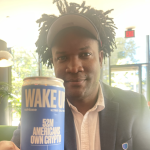 Marlon Williams is Founder at Starter Labs &
Marlon Williams is Founder at Starter Labs & 
 Jeffrey Rohrs, VP of Brand Marketing at intelligent automation provider
Jeffrey Rohrs, VP of Brand Marketing at intelligent automation provider 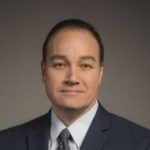 Patrick Dierberger is an assistant vice president in the Financial Management and Planning (FM&P) Department at the
Patrick Dierberger is an assistant vice president in the Financial Management and Planning (FM&P) Department at the 
 Rebecca Sylvain, Chief Executive Officer of
Rebecca Sylvain, Chief Executive Officer of 
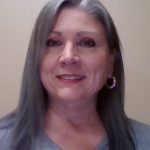 Mary Ann Haskins, Owner and Senior Consultant at
Mary Ann Haskins, Owner and Senior Consultant at 
 US-based Tierra Womack MBA, is a multiple best-selling author, host of the Wealthy Woman by Design Show, speaker & founder of
US-based Tierra Womack MBA, is a multiple best-selling author, host of the Wealthy Woman by Design Show, speaker & founder of 

